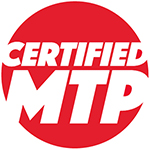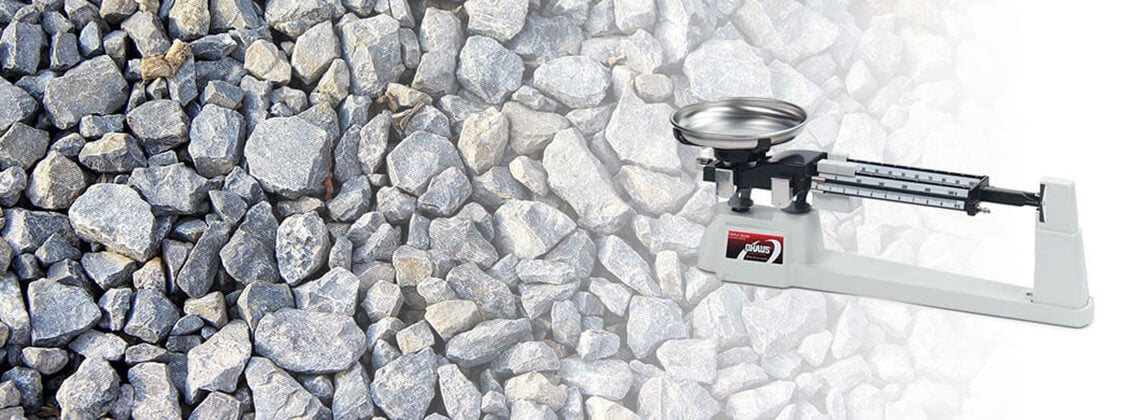When Testing Aggregate and its impact test to test the toughness of road materials, there are several steps to take to ensure the materials will be able to stand the test of time. One such step is to measure the mass of the materials after they have been oven-dried. Having a reliable scale in the lab is crucial for getting an accurate measurement. This means the scale has to be correctly calibrated to get an accurate reading.
Mastering Scale Accuracy for Precise Aggregate Testing
There are many other opportunities you might encounter in the lab in which you will need to weigh samples of soil, aggregate, concrete, etc. The accuracy of testing relies on the scale being used and the technician reading the scale, especially if it’s a mechanical scale or digital scale like the Ohaus SD200L Bench Scale. Other tips for helping maintain the accuracy of a scale’s readings are to maintain the temperature of the lab, air currents in the lab, and maintaining low vibrations in the laboratory. It’s important to calibrate your scale often, as moving or adjusting the scale can also affect the readings.
Ensuring accurate readings when testing aggregate samples is crucial for a variety of industries, including construction, civil engineering, and materials testing. Accurate measurements are vital for assessing the quality, durability, and performance of aggregates used in various applications such as concrete production, road construction, and building foundations. This article will discuss several key considerations and best practices to ensure accurate readings when testing aggregate samples.
1. Sample Collection:
The first step in obtaining accurate readings is to collect representative samples. The samples should be collected from different areas of the aggregate source to account for any potential variations. Care should be taken to avoid contamination or segregation during the collection process. Proper sampling techniques, such as using sampling tubes or containers, can help ensure that the samples are representative of the entire aggregate batch.
2. Sample Preparation:
After collecting the samples, it is essential to prepare them properly. Thoroughly mix the aggregate samples to ensure a uniform distribution of particle sizes. Crush any oversized particles to meet the required size specifications. Additionally, determine and adjust the moisture content to a standardized level for accurate testing.
3. Testing Equipment:
To obtain accurate readings, you need high-quality testing equipment such as sieves, scales, and moisture meters. You must properly calibrate and maintain this equipment to ensure precise and consistent measurements. Regularly perform calibration checks and maintenance routines to validate the accuracy of the testing equipment.
4. Sieve Analysis:
During this process, engineers pass the aggregate sample through a series of sieves with different mesh sizes to determine the particle size distribution of aggregates. It is essential to follow the appropriate ASTM (American Society for Testing and Materials) or other relevant standards for sieve analysis, ensuring accurate and reproducible results through proper agitation and sieving techniques.
5. Moisture Content Determination:
Accurately determining the moisture content of samples before conducting any tests is crucial because moisture content significantly affects the properties of aggregates. For this purpose, technicians can use moisture meters or ovens. Properly drying and weighing the samples is essential to determine the moisture content. Technicians should take care to avoid over-drying or under-drying, as it can lead to inaccurate results.
6. Data Interpretation and Reporting:
After conducting the tests, analysts should carefully analyze and interpret the data. They should investigate any outliers or inconsistencies and may need to perform repeat tests if necessary. Accurate reporting of the final results, including the appropriate units of measurement and any deviations from the required specifications, is crucial. Clear documentation and record-keeping are essential for traceability and future reference.
7. Quality Control Measures:
Implementing a robust quality control program is crucial for ensuring accurate readings when testing aggregate samples. This includes regular checks on equipment calibration, training and competency assessments for personnel involved in testing, and inter-laboratory comparisons. Quality control measures help identify and address any potential sources of error, ensuring the reliability and accuracy of test results.
accurate readings when testing aggregate samples are vital for assessing the quality and suitability of aggregates for various applications. Proper sample collection, preparation, testing equipment, and adherence to standardized procedures are crucial for obtaining accurate results. By following these best practices and implementing quality control measures, industries can rely on the integrity of their aggregate testing processes, leading to improved construction outcomes and overall quality assurance.
An In-Depth Overview of Testing Aggregate
Testing aggregate, also known as aggregate testing, is a critical process in various industries, including construction, civil engineering, and materials science. It involves evaluating the physical and mechanical properties of aggregates, which are granular materials like sand, gravel, crushed stone, and slag. These materials form the foundation of many construction projects, such as roads, bridges, buildings, and concrete production. This overview will delve into the importance of aggregate testing, the key properties assessed, and the methods employed in this crucial quality control process.
The Importance of Aggregate Testing
Aggregate testing serves several essential purposes in the construction and materials industry:
1. Quality Assurance: Testing aggregates ensures that the materials used in construction projects meet specified quality standards. This is critical to ensure the safety, durability, and performance of structures.
2. Material Characterization: It provides valuable data on the physical and mechanical properties of aggregates, helping engineers and researchers select the most suitable materials for a given application.
3. Cost Optimization: By analyzing the properties of different aggregates, it becomes possible to optimize the mix design, potentially reducing costs without compromising quality.
Keep Reading: Discover Hay Probe Tester for Accurate Moisture Measurement.
Key Properties Evaluated in Aggregate Testing
Aggregate testing focuses on a range of properties to assess the suitability of these materials for various applications. Some of the key properties include:
1. Particle Size Distribution: This property is determined through sieve analysis, which categorizes aggregates into different size fractions. The distribution of particle sizes can significantly impact the workability of concrete and the stability of road bases.
2. Gradation: The gradation of aggregates influences their performance in concrete mixes. Properly graded aggregates enhance the workability, strength, and durability of concrete.
3. Moisture Content: The moisture content of aggregates affects the water-cement ratio in concrete mixes. Excessive moisture can lead to a weaker concrete mixture.
4. Specific Gravity and Absorption: Specific gravity measures the density of aggregates, while absorption quantifies their ability to absorb water. These properties help determine the overall quality of aggregates and their effect on concrete mixtures.
5. Angularity and Texture: The shape and texture of aggregate particles impact the workability and strength of concrete. Angular, rough-textured aggregates tend to provide better interlocking within the mix.
6. Los Angeles Abrasion Test: This test evaluates the resistance of aggregates to wear and abrasion, which is critical in applications like road construction.
7. Soundness Test: The soundness of aggregates is assessed by subjecting them to cycles of freezing and thawing. This test helps identify aggregates prone to damage in freezing conditions.
8. Crushing Value: The aggregate crushing value test measures the resistance of aggregates to crushing under a compressive load, providing insights into their strength.
Methods of Aggregate Testing
Aggregate testing involves various methods and standards to evaluate the properties mentioned above. Common testing methods include:
1. Sieve Analysis: Sieves of different sizes are used to separate aggregates into various fractions based on particle size.
2. Atterberg Limits: These tests determine the plastic and liquid limits of fine-grained aggregates, helping assess their suitability for certain applications.
3. Proctor Compaction Test: This test measures the compaction characteristics of aggregates for use in road construction.
4. Los Angeles Abrasion Test: Aggregates are subjected to abrasion in a rotating drum to assess their durability.
5. Aggregate Crushing Value Test: This test determines the crushing strength of aggregates by applying a compressive load.
Testing aggregate is a fundamental step in ensuring the quality and performance of construction materials. It plays a crucial role in the design, construction, and maintenance of infrastructure projects. By evaluating properties such as particle size distribution, gradation, moisture content, and strength, engineers and researchers can make informed decisions about the selection and use of aggregates. Aggregate testing ultimately contributes to the safety, durability, and efficiency of various construction applications, making it an indispensable aspect of materials science and civil engineering.
In conclusion
accurate aggregate testing is paramount for ensuring the durability and longevity of construction materials. Proper sample collection, preparation, and meticulous attention to testing procedures are essential for obtaining reliable results. By adhering to standardized methods and implementing quality control measures, industries can trust in the integrity of their aggregate testing processes, ultimately leading to safer and more resilient infrastructure. For reliable materials testing equipment, consider Certified Materials Testing Products, your one-stop shop for all testing needs.
If you need to purchase any materials testing equipment to replace or add to your lab supplies, shop at Certified Materials Testing Products for your one-stop shop for all your testing products. We offer equipment for testing concrete, asphalt, aggregate and soil testing. You can even sign up for savings and discounts with us. We sell both mechanical scales, like the Virtual Triple Beam Balance or digital scales, like the http://www.certifiedmtp.com/search.php?search_que… with a digital readout.

